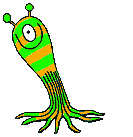
Natural Science and Technology
Bosch Grade 4

EARTH AND BEYOND


Week 1 challenge
This week we learnt about the features of the Earth and how well positioned Earth is in the Universe to enable it to sustain life. What an incredible journey into Space we are going to have this term!
Use the words in the box to fill in the missing words below:
1. Earth moves around the __________.
2. Earth is __________ and made of _______.
3. Earth is a __________ because it moves around the
Sun.
4. Each living thing on Earth has its own _______where
it lives, grows and survives.
5. The thin layer of air that surrounds Earth is called
the ____________.
6. The outer most layer of the Earth is called the ____.
7. Earth's land consists of islands and continents. There
are _________ continents and _______ islands.
8. The _______ are large pieces of Earth's land
surfaces.
9. Most of the Earth's surface is covered in _______.
10. We call the Sun and its planets the ___________.
Water most Sun atmosphere
continents Solar System many
eight planet habitat a few rock plant Ozone Layer seven Moon round
Watch and listen carefully to the video of Goldfish - Moonwalk Away and quote the
first words that were said on the Moon.
Find out who actually said these words. .
The Solar System Song
Week 2+3 challenge
This week we learnt about the Sun and discovered that it is actually a star. It is not even the biggest star in our Universe! Below are ten descriptions. Draw three columns on your page and give each a heading: Sun; Earth; Moon. Your challenge is to write each description under the correct heading.
-
We cannot see it when the Sun is shining brightly.
-
This is a very large, bright star that gives us warmth and light.
-
It is the smallest of the three bodies.
-
Earth is one of its planets.
-
This object in space is our home.
-
It is dangerous to look directly at it.
-
More than half of its surface is covered by water.
-
It is a planet of the Sun.
-
It moves around the Earth.
-
It provides all living things with a habitat.
Goldfish - Moonwalk Away
The Storybots
Click on the YouTube sign on the bottom right hand corner to watch it large on YouTube.
Travel through the Known Universe
Check out this cool website! You can explore the Solar Sytem and learn about each planet and its moons as you zoom in and out of the planets. You can also download this for your iPAD!
Click on the dancing alien.
Miss the Moon?
Here are two links
to help you with
your Moon project...
Week 4 challenge
The Sun is the closest planet to Earth.
The Earth is at the centre of the Solar System.
The planet moves in a pathway called a revolution.
The Earth takes 24 hours to rotate around the Sun.
The Sun would support life on Earth better if Earth were closer to the Sun.
The Sun's heat causes water to condense in the Water Cycle.
This week we looked at the planets orbiting the Sun. We also learnt about day and night and how this is made possible by the rotation of the Earth. This is your challenge this week:
Each statement below is incorrect. You need to write them out so that they are correct.
Week 5 challenge
This week we learnt about the
Moon. We looked at the
features of the Moon and even
imagined that we were
astronauts travelling to the
Moon.
This week's challenge is to test how well you know about the features of the Moon. Read the statements below and state whether they are TRUE or FALSE.
-
The Moon is triangle-shaped.
-
On the Moon, there is no liquid water.
-
On the Moon, there is no dust.
-
The Moon does not have any Mountains.
-
The Moon has many craters.
-
The craters on the Moon are made by asteroids.
-
The craters on the Moon are made by spacecrafts that land on the Moon.
-
The first person on the Moon was Lance Armstrong.
-
The Moon shines because the Sun's light reflects off it.
-
We see the same phase of the Moon once every 45 days.

Week 6 challenge
This week we learnt that the Moon's shape changes every day. We call these the Phases of the Moon. We also completed our Moon Watch Project, which was on the Phases of the Moon. Complete the questions below to make sure you understand the Phases of the Moon.
1. How many Phases of the Moon are there?
2. How long does it take for the Moon to complete a ful
revolution around the Earth?
3. If you saw a Full Moon, how many days would it take before you
saw a Full Moon again?
4. Are there any myths that you know of that involve the Full
Moon?
5. Look at the diagram below and name each phase of the Moon in order from left to right.
6. Which phase is not shown in the diagram below?


IDEA: Make your own NST 30 Seconds cards and play it with your family!

Week 9 challenge
This week we learnt about how energy is transferred
* Check your answers in Mrs Slater's classroom.






